You have seveal issues with the regs. The first stages are not a big deal, the internals of a USD DA Aquamaster will work in them if I remember correctly, plus odds are you can resurface the HP seat. The pain you have is the second stages. I have not had my hands on those particular regs but in general the diaphragms on that vintage of regs is a different size than modern regs. I have been looking for a modern alternative for several years. The rubber (plastic ??) that they were made out of was cardboard when new and worse at this age. Add to it, the seconds are tilt valve design. They are a pain to get to seal and difficult to restore. I have been told by a friend that he has prefected a way to restore them and I have recently came up with an idea of my own (not tried it yet- just one of those ah ha moments that I will get around to playing with one of these days). Basically, these second stages are restoration 201 or maybe 301, not something you will want to take on as a first project....don't trash them, just save them for later if you get into restoring the old regs.
And a word of caution...that button looking thing on the first stage beside the hose is an over pressure relief valve DO NOT connect those seconds to any first stage that is not equipped with one or has a modern second stage attatched at the same time. Tilt valves are up stream valves and if the pressure in the first stage should happen to rise they WILL NOT vent overpressure like a modern second stage, the result is a blown second stage hose. At best you get the crap scared out of you and serious injury is possible. I am not saying don't restore them, just be aware of what that part is, why it's there and how to work around it.
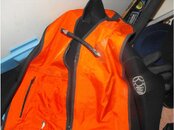
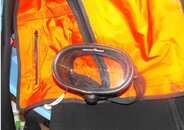
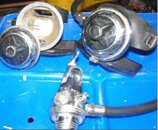
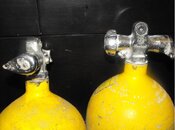
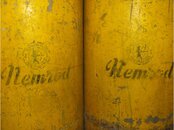

 Is there any special technique to getting yyour weight right with no bc diving? As it is now I only use a touch of air for bouyancy once I get down to 40 feet or so, I guess cause of suit crush. Has anyone ever found diaphragms for these regs? maybe the lds will have something that'll work
Is there any special technique to getting yyour weight right with no bc diving? As it is now I only use a touch of air for bouyancy once I get down to 40 feet or so, I guess cause of suit crush. Has anyone ever found diaphragms for these regs? maybe the lds will have something that'll work




